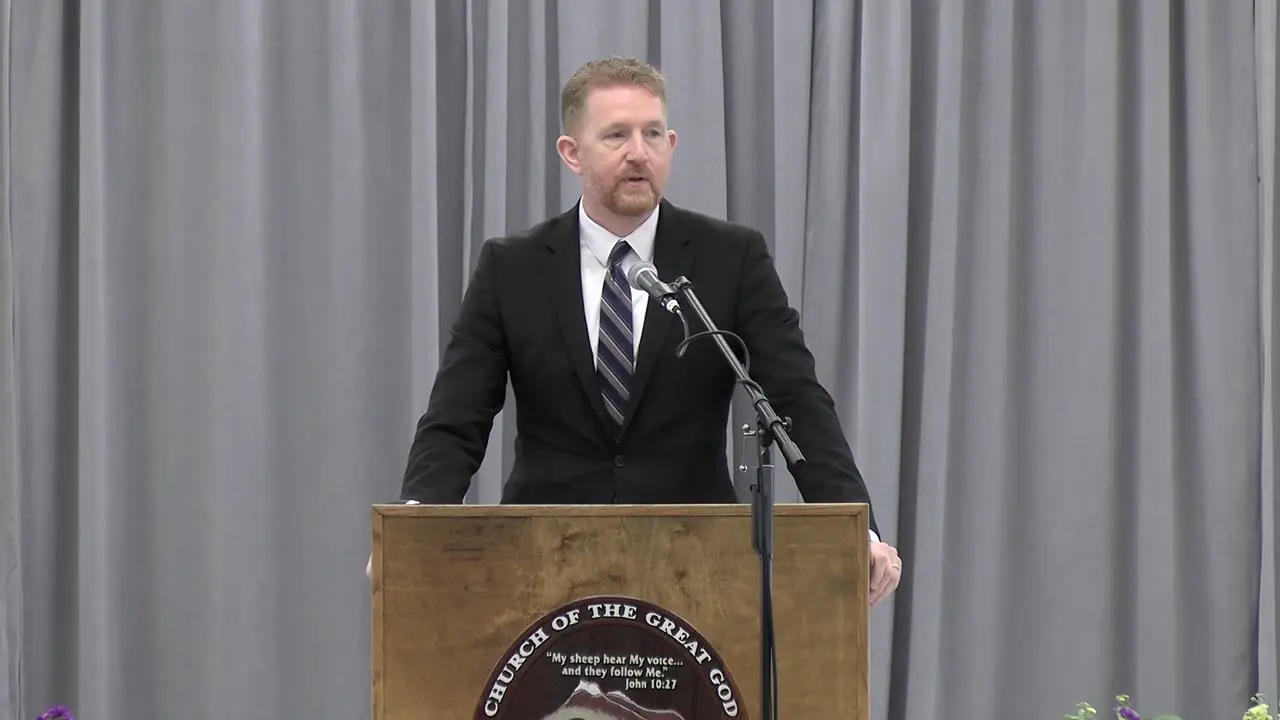Filter by Categories
Don't Go Out of the House!
Sermon by John W. RitenbaughThe concept of "House, Symbol of" carries profound significance as a representation of spiritual truths and instructions for God's people. In Exodus 12:22-23, 27, the command "Go not out of the house" is given, where the house symbolizes a place of safety and protection under God's covenant. The door, often used to represent the entire house, underscores this protection, as the blood of the lamb on the doorposts and lintel prevents the destroyer from entering. This imagery illustrates that remaining within the house—spiritually understood as staying within God's will—is essential for safety and deliverance. The term "house" expands in meaning throughout Scripture, representing not just a physical structure but also family, household, dynasty, and kingdom. In Genesis 7, Noah's house refers to his family entering the ark, showing "house" as a container for those under God's care. In II Samuel 7 and I Chronicles 17, God's promise to build David a house signifies a dynasty and kingdom, revealing the broader spiritual implications of the term. This symbolism extends to I Peter 4:17, where God's house is identified as His family or church, the starting point of His judgment, emphasizing the importance of remaining within this spiritual household. Further, in I Peter 2:5, Christians are described as living stones built into a spiritual house, highlighting their integral role in a dynamic, living organism connected to Christ, the Chief Cornerstone. This house is a place of function and purpose, where spiritual sacrifices are offered. I Corinthians 3:9-17 reinforces this, portraying believers as God's building, co-laborers with Him, and a structure being built upon the foundation of Christ. The instruction remains clear: do not leave this house, as departing renders one useless and leads to spiritual death. In Ephesians 2, the metaphor evolves to a temple, a dwelling place for God by His Spirit, with Christ as the cornerstone and believers as fellow citizens in a spiritual community. John 10 introduces the sheepfold as another enclosed structure symbolizing the house, with Christ as the door, providing protection and abundant life to those who remain within. The church, as seen in I Corinthians 12 and Ephesians, is likened to a body with Christ as the Head, illustrating the vital connection and unity necessary for function and growth, further emphasizing the command not to leave. Ultimately, the house symbolizes the church, the family of God, a kingdom, and a living organism where believers are to remain until the morning—until the return of the Light of the world or their own passing. This enduring instruction, rooted in Exodus 12, warns against departing from this spiritual refuge, as there is no higher place on earth than to be within God's house.
Go Not Out of the House
Sermon by John W. RitenbaughFor Passover, Israel was commanded not to go out of their houses. This is also a warning to Christians when we understand the implications of the word 'house'.
Don't Leave the House!
Sermon by John W. RitenbaughAs part of Christ's body or household, we have a responsibility to stay attached to the spiritual organism and to respond to the head.

Biblical Symbolism (Part Four)
Bible Study by Richard T. RitenbaughUnderstanding biblical symbols gives a reader insight into what God is teaching His people through common metaphors. It also aids in opening up prophecy.

My House or God's?
'Prophecy Watch' by David C. GrabbeIn a revealing passage (John 7:53-8:1), the apostle John contrasts Jesus Christ to the Jews. God wants His people to prioritize Him above themselves.

The Feasts of Tabernacles and Unleavened Bread
Feast of Tabernacles Sermon by David C. GrabbeIn this message, we learn the divine wisdom and unity within Almighty God's festivals (Leviticus 23) showing how each feast reveals His character, plan, and purpose for humankind. The speaker, using the method of comparison and contrast, exposes a chiastic structure or mirrored design connecting the spring and fall festivals, particularly Unleavened Bread and Tabernacles, both centering on deliverance, dwelling, and dependence on God, forming a complete picture of salvation through Christ. The pattern of one day followed by seven (Passover/Unleavened Bread) and seven days followed by one (Tabernacles/Last Great Day) symbolized the perfection and symmetry of His redemptive plan. Unleavened Bread focuses upon cleansing, sincerity, and feeding on Christ, the Bread of Life. Consequently, when we remove food from our dwellings, we purify every sphere of authority under God, thereby building a stable spiritual house upon Christ. Tabernacles, in contrast, emphasizes impermanence and humility, dwelling in temporary booths, reminding us of our dependence on God's daily provision in the wilderness. Together the permanence of houses and the transience of booths teach us that true security lies not in possessions or comfort but in Almighty God's sustaining presence. The physical symbols of food and dwelling illustrate some divine paradoxes. During Unleavened Bread, food lacks leaven—self-sufficiency and sin—but during Tabernacles, housing lacks permanence—worldly security and control. Through abundance and lack, permanence and transience, God's people learn to dwell in His presence, feed on His Word, and trust His timing.
Faith and the Christian Fight (Part Eight)
Sermon by John W. RitenbaughAbraham embodied living by faith. Through perpetually living in a tent, he demonstrated his complete trust and reliance upon God.